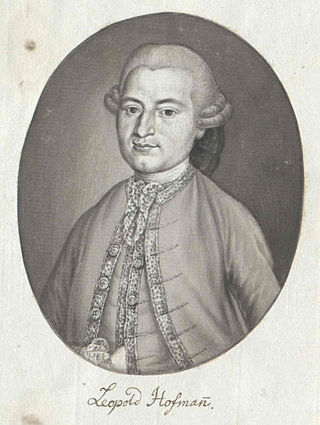Related Research Articles

Carl Ditters von Dittersdorf was an Austrian composer, violinist, and silvologist. He was a friend of both Haydn and Mozart. His best-known works include the German Singspiele Doktor und Apotheker and a number of programmatic symphonies based on Ovid's Metamorphoses.

Giuseppe Martucci was an Italian composer, conductor, pianist and teacher. Sometimes called "the Italian Brahms", Martucci was notable among Italian composers of the era in that he dedicated his entire career to absolute music, and wrote no operas. As a composer and teacher he was influential in reviving Italian interest in non-operatic music. Nevertheless, as a conductor, he did help to introduce Wagner's operas to Italy and also gave important early concerts of English music there.

Siegmund von Hausegger was an Austrian composer and conductor.

Franz Ignaz Beck was a German violinist, composer, conductor and music teacher who spent the greater part of his life in France, where he became director of the Grand Théâtre de Bordeaux. Possibly the most talented pupil of Johann Stamitz, Beck is an important representative of the second generation of the so-called Mannheim school. His fame rests on his 24 symphonies that are among the most original and striking of the pre-Classical period. He was one of the first composers to introduce the regular use of wind instruments in slow movements and put an increasing emphasis on thematic development. His taut, dramatic style is also remarkable for its employment of bold harmonic progressions, flexible rhythms and highly independent part writing.

Leopold Hofmann was an Austrian composer of classical music.
Mily Balakirev began work on his Symphony No. 2 in D minor in 1900, but did not complete the work until 1908. The premiere of the symphony was conducted by Russian composer Sergei Liapunov, a student of Balakirev, in St. Petersburg in 1909. Another performance was held in Paris soon afterwards.
References
- Bryan, Paul, Johann Waṅhall, Viennese Symphonist: His Life and His Musical Environment Stuyvesant: Pendragon Press (1997)
- Hill, George R.: "Thematic Index" in The Symphony 1720–1840 Series B - Volume X, ed. Barry S. Brooks (New York & London, 1981) ISBN 0-8240-3807-X